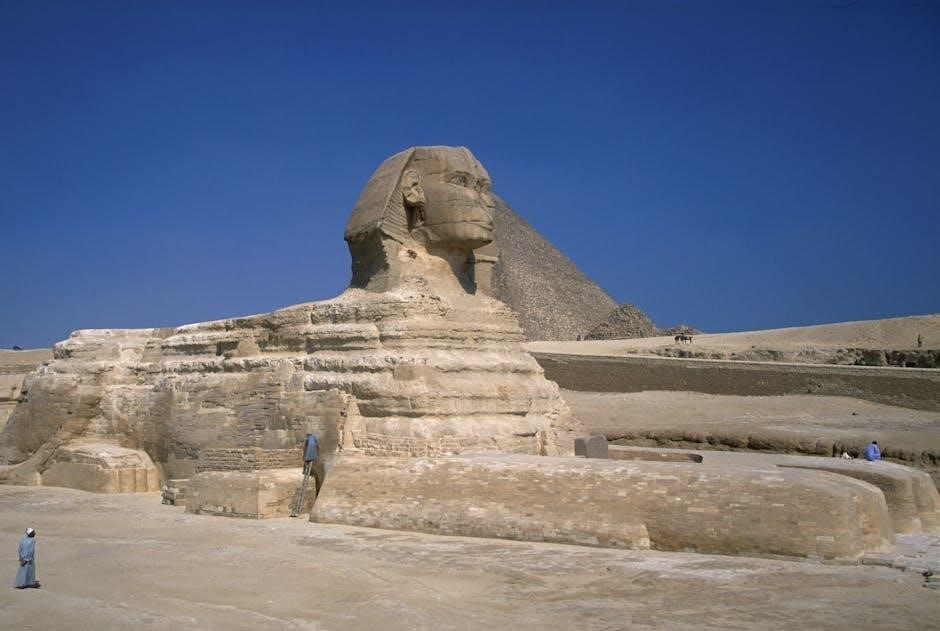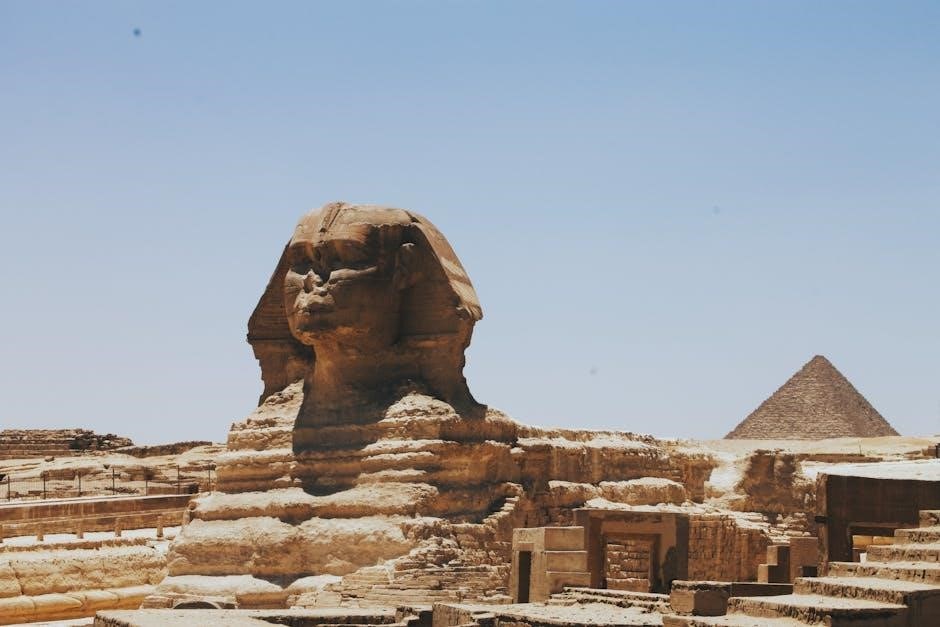Origin of “How Great Thou Art”
The hymn “How Great Thou Art” originated in Southern Sweden in 1886, written by Carl Boberg, a Swedish author and parliament member. Initially titled “O Store Gud,” it reflected awe-inspired reflections on nature and divine power, drawing inspiration from Psalm 8.

1.1 The Birthplace in Southern Sweden
The hymn “How Great Thou Art” was born in Southern Sweden in 1886. Written by Carl Boberg, it emerged from his home in the picturesque Swedish countryside. Originally titled “O Store Gud” (O Great God), the hymn was inspired by a thunderstorm and the serene natural beauty of the region, reflecting deep spiritual awe and wonder at God’s creation.
1.2 Carl Boberg: The Creator of the Hymn
Carl Boberg, a Swedish poet, author, and parliament member, created the hymn “How Great Thou Art” in 1886. Inspired by a thunderstorm, he penned the poem “O Store Gud,” which later became the hymn. Boberg’s deep faith and love for nature are evident in the lyrics, reflecting his awe of God’s power and creation.

The Journey of the Hymn to the English-Speaking World
The hymn traveled from Sweden to England, translated by missionaries, and later to the U.S., where Stuart K. Hine adapted it into the beloved English version.
2.1 Stuart K. Hine and the English Translation
Stuart K. Hine, a British missionary, translated the hymn into English in 1949, adapting it with a powerful chorus. His version, finalized in 1953, became widely popular, introducing the hymn to global audiences. Hine’s translation preserved the original’s theological depth while making it accessible to English-speaking congregations, ensuring its enduring legacy in worship worldwide.
2.2 The Role of George Beverly Shea in Popularizing the Hymn
George Beverly Shea, a renowned Gospel singer, played a pivotal role in popularizing “How Great Thou Art.” His powerful baritone voice captivated audiences, and his performances during Billy Graham’s crusades introduced the hymn to millions worldwide. Shea’s rendition, often featured in evangelistic meetings and on television, helped cement the hymn’s place as a beloved worship anthem, making it a staple in Christian music and church services globally.
The Hymn’s Structure and Composition
The hymn features three verses and a powerful chorus, structured in an 11.10.11.10 meter with a refrain. Each verse explores themes of creation, redemption, and eternity, blending doctrine with devotion in a lyrical masterpiece.
3.1 The Three Verses and Their Significance
The three verses of “How Great Thou Art” each convey profound spiritual truths. The first verse magnifies God as Creator, reflecting on the universe’s grandeur. The second verse focuses on Christ’s sacrifice, emphasizing redemption. The third verse anticipates Christ’s return, evoking hope and eternal praise. Together, they form a theological journey from creation to redemption to eternity, encapsulating the Christian faith’s essence.
3.2 The Chorus: “How Great Thou Art”
The chorus of “How Great Thou Art” is a powerful declaration of God’s majesty, repeating the phrase “How great Thou art” to emphasize divine greatness. Its simple yet profound lyrics evoke deep reverence, drawing listeners to reflect on God’s creation and redemption. The chorus serves as a climactic expression of awe and worship, uniting believers in a shared celebration of God’s glory and sovereignty.

Theological Themes in the Hymn
The hymn explores themes of divine creation and redemption, praising God’s majesty and reflecting on Christ’s sacrifice, emphasizing awe and gratitude for His divine plan.
4.1 Praise to God as the Creator
The hymn glorifies God as the Creator, highlighting His majesty through nature’s wonders. Verses reference Psalm 8, acknowledging God’s handiwork in the stars, thunder, and all creation, evoking awe and reverence for His divine craftsmanship and sovereignty over the universe, reflecting humanity’s smallness yet His infinite greatness.
4.2 Reflections on Christ’s Sacrifice and Redemption
The hymn profoundly reflects on Christ’s sacrifice, with verses like “And when I think that God, his Son not sparing, sent him to die” emphasizing redemption. It captures the depth of God’s love, highlighting Christ’s atonement as the ultimate expression of divine grace, resonating deeply with believers and underpinning the hymn’s enduring spiritual significance.

Musical Renditions and Interpretations
The hymn has been reimagined in various genres, from classical to gospel jazz. Jordan Smith’s gospel jazz version stands out, blending powerful vocals with instrumental depth. Acoustic renditions and worship band arrangements preserve its timeless essence while introducing fresh expressions.
5.1 Classical and Gospel Jazz Adaptations
Classical arrangements often feature orchestral elements, emphasizing the hymn’s majestic tone; Gospel jazz adaptations, as seen in Jordan Smith’s version, infuse soulful rhythms and harmonies, creating a vibrant, modern sound while maintaining the original’s reverence. These adaptations showcase the hymn’s versatility, appealing to diverse audiences and preserving its spiritual depth across different musical styles and eras.
5.2 The Role of Worship Bands in Modern Performances
Worship bands have revitalized “How Great Thou Art” with contemporary arrangements, blending traditional lyrics with modern instrumentation. Groups like Norton Hall incorporate acoustic and full-band setups, creating dynamic performances that resonate with today’s congregations. Their interpretations maintain the hymn’s spiritual essence while appealing to a new generation of worshippers through fresh musical expressions.

The Hymn’s Cultural and Spiritual Impact
“How Great Thou Art” has profoundly influenced Christian culture, transcending denominations and languages. Its powerful lyrics inspire worship globally, deepening faith and fostering unity among believers.
6.1 The Hymn in Church Services and Choir Performances
“How Great Thou Art” is a cornerstone in church services, often performed by choirs to inspire awe and devotion. Its powerful lyrics resonate deeply, fostering a sense of unity among congregations. The hymn’s emotive melody, especially in choir arrangements, elevates worship, creating moments of spiritual reflection. Its inclusion in church services and choir renditions has solidified its place as a timeless worship classic.
6.2 Its Use in Evangelistic Meetings and Crusades
“How Great Thou Art” has been a powerful tool in evangelistic meetings and crusades, stirring hearts and bringing people closer to faith. George Beverly Shea’s iconic renditions during Billy Graham’s crusades showcased its ability to inspire spiritual awakening. The hymn’s universal message of God’s greatness transcends cultures, making it a beloved choice for spreading the Gospel and fostering spiritual reflection during such events.

The “How Great Thou Art” PDF Resource
The “How Great Thou Art” PDF offers convenient access to lyrics, sheet music, and arrangements, making it a valuable tool for worship leaders to organize services efficiently.
7.1 The Lyrics and Sheet Music Available Online
The “How Great Thou Art” PDF provides a comprehensive resource, featuring complete lyrics and sheet music. This format allows for easy access and organization, making it ideal for worship leaders and musicians. The PDF includes chord charts, melody lines, and arrangements for various instruments, ensuring versatility for different worship settings. Its availability online facilitates quick downloading and sharing, enabling seamless preparation for church services and personal devotion. This resource supports meaningful worship experiences worldwide.
7.2 The Importance of the PDF Format for Worship Leaders
The PDF format of “How Great Thou Art” is indispensable for worship leaders, offering a clean, professional layout that preserves musical notation and lyrics. It ensures consistency across devices, preventing formatting issues. Leaders can easily print or project the PDF, making it a reliable tool for rehearsals and services. Additionally, it allows for easy editing and customization to suit specific worship styles, enhancing flexibility and accessibility for modern and traditional settings alike.
Analyzing the Lyrics
The lyrics of “How Great Thou Art” are rich in biblical imagery and emotional depth, praising God’s creation and reflecting on Christ’s sacrifice, making them timeless and universally inspiring.
8.1 Biblical References and Imagery
The hymn “How Great Thou Art” is filled with vivid biblical imagery, drawing from Psalms and the Gospels. The lyrics reference God’s creation, such as the stars and rolling thunder, symbolizing His power. Additionally, the sacrifice of Christ is depicted, reflecting redemption and divine love, making the hymn a profound expression of faith and worship rooted in Scripture.
8.2 The Emotional and Spiritual Depth of the Words

The hymn’s words evoke profound emotions, from reverence for God’s majesty to joy in His creation. It invites personal reflection on Christ’s sacrifice and divine love, fostering a deep spiritual connection. The lyrics resonate universally, transcending generations, and inspire surrender to God’s will, making it a timeless source of comfort and devotion for believers worldwide.

The Legacy of “How Great Thou Art”
9.1 Why It Remains a Timeless Hymn
“How Great Thou Art” endures as a timeless hymn due to its universal themes of creation, redemption, and awe. Its emotional depth resonates across cultures and generations.
“How Great Thou Art” remains timeless due to its universal themes of creation, redemption, and divine awe. Its emotional depth transcends generations, resonating with worshippers globally. The hymn’s ability to evoke reverence and gratitude continues to connect people to their faith, making it a beloved and enduring piece of Christian music across cultures and languages.
9.2 Its Influence on Contemporary Christian Music
“How Great Thou Art” has profoundly influenced contemporary Christian music, inspiring artists to blend traditional hymns with modern styles. Its timeless themes and emotional depth have led to reimagined versions, from gospel jazz to acoustic renditions. The hymn’s versatility and ability to connect emotionally have set a standard for worship music, encouraging artists to create innovative yet reverent interpretations that resonate with new generations.
Tips for Performing the Hymn
Emphasize reverent dynamics, balancing soft and powerful moments. Use acoustic instruments like piano or guitar for a sparse, introspective sound, allowing vocals to shine with emotional depth.
10.1 Vocal Techniques for Expressing Reverence
Employ subtle vibrato and controlled dynamics to convey awe and humility. Use legato phrasing to maintain a prayerful tone, especially in lines like “O Lord my God.” Avoid overly dramatic flourishes; instead, focus on heartfelt delivery to emphasize the hymn’s spiritual depth and reverence.
10.2 Instrumental Accompaniment Suggestions
Use a piano or acoustic guitar to create a reverent foundation. Add strings like violins or cellos for emotional depth. Subtle percussion can enhance dynamics without overpowering vocals. Consider a gradual build from verse to chorus, adding brass for triumph. Balance instrumentation to maintain the hymn’s sacred essence, ensuring accompaniment supports rather than overwhelms the lyrical message.

Modern Interpretations and Innovations
Contemporary artists infuse “How Great Thou Art” with fresh styles, blending gospel jazz and acoustic arrangements. Worship bands and digital formats ensure its relevance in today’s music scene.
11.1 Adding New Twists While Preserving the Essence
Modern artists refresh “How Great Thou Art” with innovative styles, such as gospel jazz and acoustic arrangements, while maintaining its foundational reverence. Jordan Smith’s powerful vocals and instrumental experimentation showcase this balance, blending traditional lyrics with contemporary sounds to appeal to diverse audiences without losing the hymn’s timeless message of awe and devotion to God’s greatness.
11.2 The Hymn’s Relevance in the Digital Age
The timeless message of “How Great Thou Art” resonates in the digital era through various formats, including PDF sheet music and lyric videos. Artists like Jordan Smith and worship bands share their renditions online, reaching global audiences. This accessibility ensures the hymn remains a vital part of worship, bridging traditional and modern worship practices with its enduring theological themes and emotional depth.
